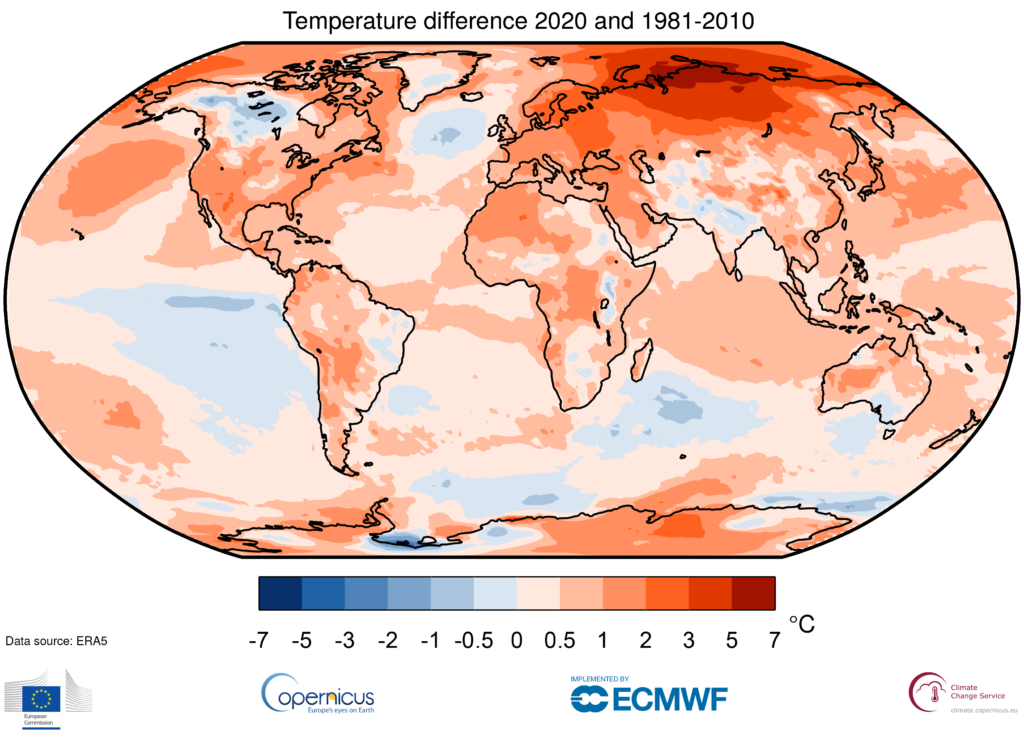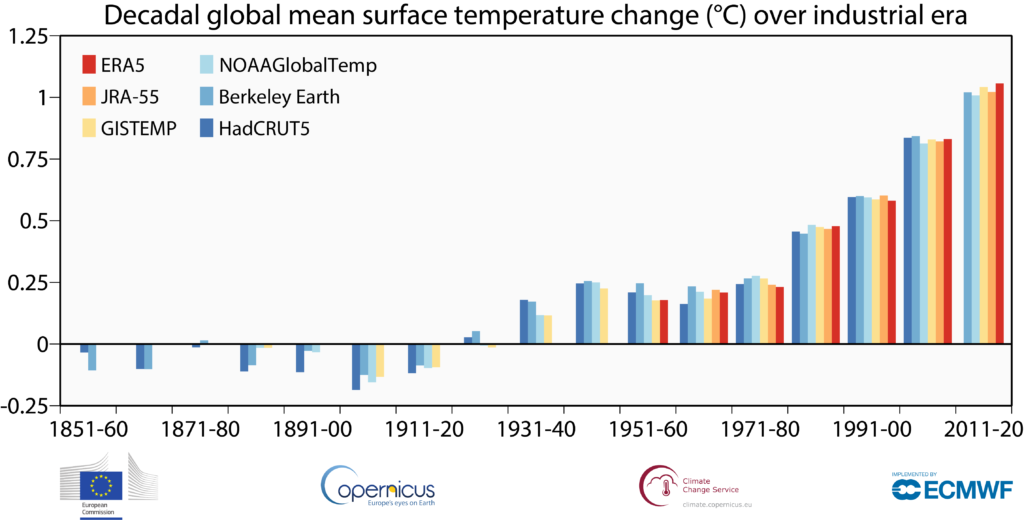The climate crisis did not take a break last year. The year 2020 is tiedwith 2016 as the hottest year on record, according to European climate researchers. The record warmth fueled record wildfires in the Arctic, a large number of tropical storms in the Atlantic, and deadly heatwaves.

Although emissions dropped 7% last year due to the lockdowns, they continued to build up in the atmosphere and thanks to inertia from previous years, we ended up with a new record. The average surface temperature was 1.25ºC higher than in the pre-industrial period of 1850-1900, dangerously close to the 1.5ºC target set in the Paris Agreement, which is already looking more and more unlikely.
Only 2016 matched the heat seen in 2020, but that year had a natural El Niño climate event that boosts temperatures. Without it, 2020 would have almost certainly been the hottest year so far. Scientists have repeatedly warned that urgent action is needed for the world to avoid the worst consequences of the climate crisis.
The data was published by the European Union’s Copernicus Climate Change Service (C3S), which showed that the past six years were the hottest six on record and that 2011-2020 was the warmest decade recorded. CO2 concentrations in the atmosphere rose at a rate of approximately 2.3 ppm/year, reaching a maximum of 413 ppm during May.
Vincent-Henri Peuch, Director of the Copernicus Atmosphere Monitoring Service (CAMS), said in a statement: “While carbon dioxide concentrations have risen slightly less in 2020 than in 2019, this is no cause for complacency. Until the net global emissions reduce to zero, CO2 will continue to accumulate in the atmosphere and drive further climate change.”
For Europe, 2020 was the hottest year on record, 1.6ºC above the long-term average. Seasonally winter 2019/20 and autumn 2020 were also the warmest recorded. Winter 2020, from December 2019 to February 2020, exceeded the previous warmest of 2016 by almost 1.4°C, while autumn (September to November 2020) passed the old record set in 2006 by 0.4°C
The Arctic is experiencing faster global warming than the rest of the planet, a trend that was also reflected in the 2020 numbers. A large part of it saw annual average temperatures more than 6ºC higher than a baseline average from 1981 to 2010. On a monthly basis, the largest positive temperature anomalies reached more than 8°C.

This led to extensive wildfires across the Arctic (yes, wildfires in the Arctic), with the first detected in May, continuing throughout summer and well into autumn. As a result, poleward of the Arctic Circle, fires released a record amount of 244 megatons of CO2 in 2020, over a third more than the 2019 record. During the second half of the year, Arctic sea ice was significantly lower than average for the time of the year.
The Northern Hemisphere had above-average temperatures for the year, apart from a region over the central North Atlantic. In contrast, parts of the Southern Hemisphere saw below-average temperatures, especially over the eastern equatorial Pacific, associated with the cooler La Niña conditions developing during the second half of the year.
“The extraordinary climate events of 2020 and the data from the Copernicus Climate Change Service show us that we have no time to lose. We must come together as a global community, to ensure a just transition to a net-zero future. It will be difficult, but the cost of inaction is too great,” said Matthias Petschke, Director for Space, European Commission’s Directorate-General for Defence industry and Space, in a statement.
There’s no way around it: unless we see drastic and quick reductions in global emissions, years will get hotter and hotter and we — along with everyone else on Earth — will pay the price.


